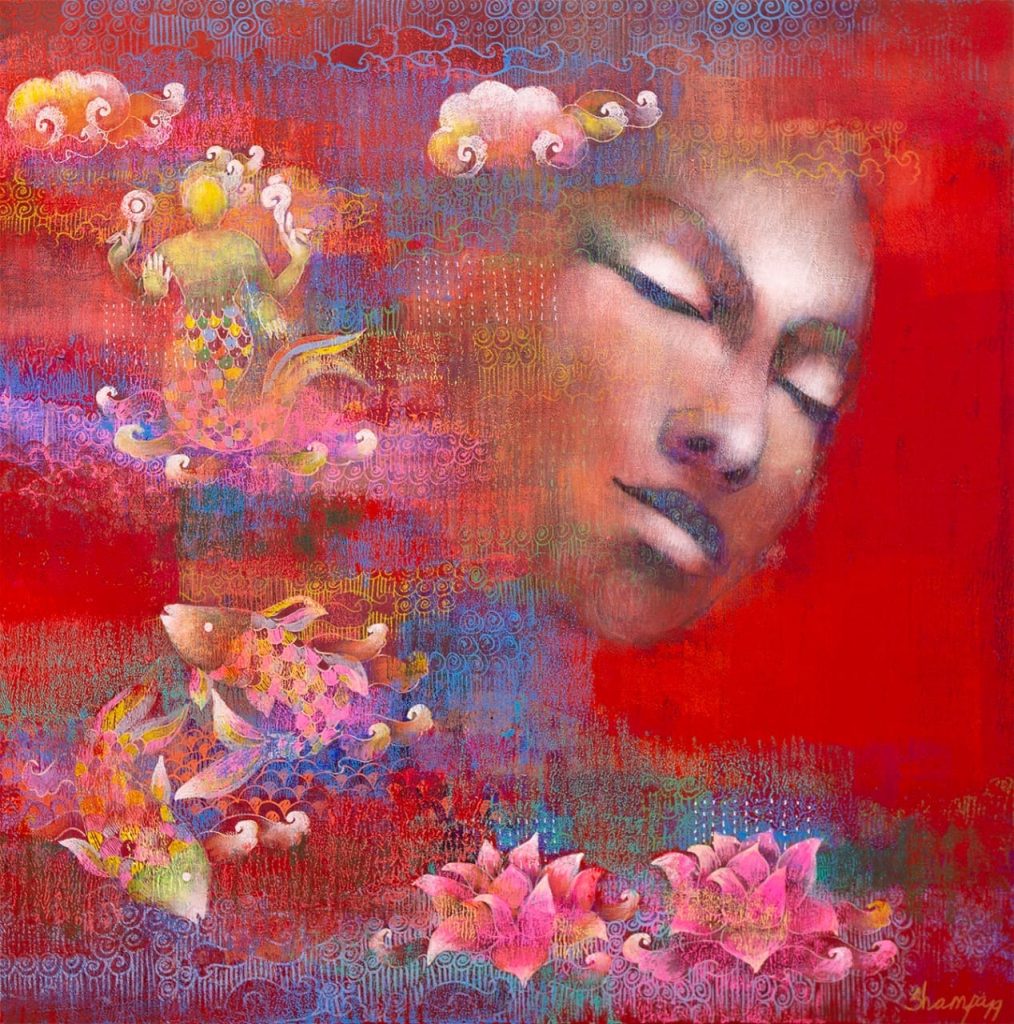After years of study and mastery, artists can create a perfect portrayal of a body, a body in motion, or an abstract idea. The result is a lifelong quest for the peculiar ingredient that heightens the beauty of life. It is comparable to a musical note; a musician moves along with them like a river. Artist Jatin Das is renowned for striking representations of human bodies in motion and at rest in an abstract physique.
The story of artist Jatin Das starts in Baripada, a rural village in Orisha. He became prominent as a painter, poet, sculptor, muralist, print-maker, teacher, cultural expert, founder chairman of the JD Centre of Art, and eminent Padma Bhushan awardee for his contribution to art. At an inter-university youth festival in 1956, Jatin Das placed first in a painting competition and was given a prize by Pandit Jawaharlal Nehru. He eventually met Julius Vaz, the chief architect of Bhubaneshwar, the new capital of Orissa, who inspired him to pursue art seriously.
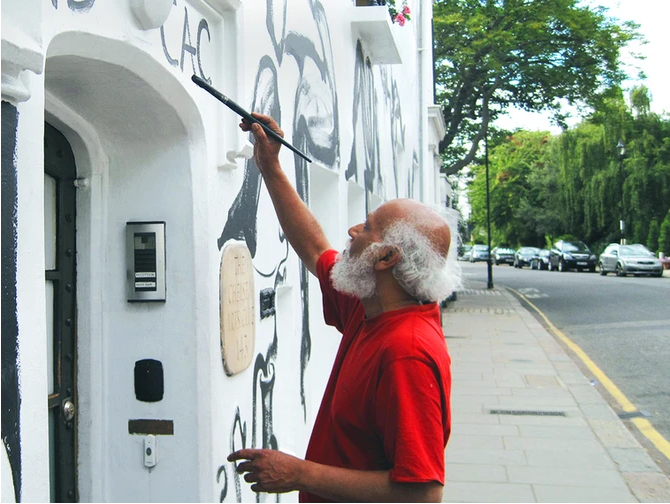
The artist enrolled at the JJ School of Art to study architecture and shifted to painting after six months. Jatin studied under S.B. Palsikar, a master artist, and J.D. Gondhalekar, director of the art school, produced a volume of drawings, 300 a day, in a newspaper, which he bought in the market for fifty paise a kilo. Use his left hand as a model in a different position to draw. His early practice of drawing in botanical gardens, flight, birds and animal movement made him a master at depicting movement in stillness, and he even drew as the dancer’s hands moved in space. Jatin Das brings the narratives of the lyrical rhythm of bodies into drawing, different flows of lines in everybody’s motions. During his early student period, Jatin Das frequently drew classical sculptures of Konark, Khajuraho and Mahabalipuram. In the late 1950s, Jatin Das started to travel around India, including Santiniketan, to interact with artists and masters like Ramkinkar Baij and Binode Behari Mukherjee.
Jatin Das became the youngest artist to receive a studio when Madhuriben Desai, an archaeologist, art critic, and educator, granted him a scholarship to set up a studio at the Bhulabhai Memorial Institute in 1959. The artist made many significant connections there, including Ebrahim Alkazi, Pandit Ravi Shankar, V. S. Gaitonde, M. F. Husain, F. N. Souza and Other Progressives of Bombay, B. K. S. Iyengar, and many more who would go on to represent Indian art and culture.
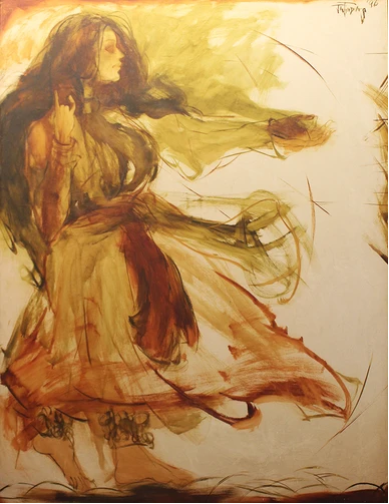
Dada Adarkar, the art school director, organised Jatin Das’ first solo exhibition in 1961 as the opening event for an exhibition space inside the institution. Jatin travels to Finland, Russia, and Afghanistan to attend the International Youth Festival after receiving a gold medal in painting from the J J School of Art. Jatin has always enjoyed and wrote poetry, a trait he inherited from his mother; he especially enjoyed her poems devoted to Krishna. Along with other editors, including R. Parthasarathy and Indrasen M. Jayakar, Jatin co-edited Blunt, a poetry magazine with a basis in Bombay. He also attended poetry reading groups and published poetry. The artist founded the Bombay Poetry Group, which includes renowned poets like Nissim Ezekiel, Adil Jussawal, Geive Patel, Arun Kolatkar, Dilip Chitre, Arvind Kishan Malhotra, among others, meet regularly at Café Samovar in Jehangir Art Gallery.
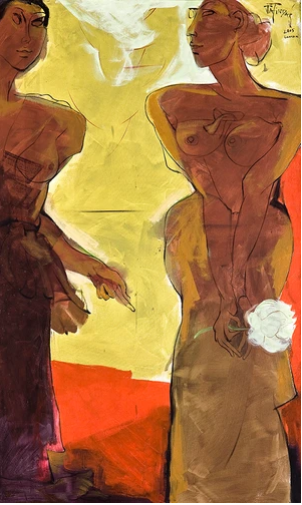
Jatin Das displayed his artwork all over the world during the 1970s, including at the VII Paris Biennale, the first print Biennale in England, the second and third Triennale India, Arts 38 Gallery, London; a series of solo exhibitions in the United Kingdom at Commonwealth Institute London, Garden Gallery, Loughborough, City Museum, and Gallery de Sphinx, Birmingham. Solo shows in West Germany include Bharat Verein, one of the oldest Indian cultural associations headquartered in Frankfurt, Hotel Kempinski in West Berlin and Schloss Bellevue Palace in Kassel, the Indian Art Exhibition at Trade Fair, Hong Kong, Venice Biennale, Italy, Asian Arts Exhibition at Fukuoka Art Museum, Japan. The artist met Menashe Kadishman, an eminent artist from Israel, at the Venice Biennale; later, he did a workshop with him on steel sculptures in Tel Aviv, Israel, almost two decades later. In addition to art exhibitions, Jatin Das published a Poetry collection as a part of the Writers’ Workshop in Calcutta. Jatin joined the Jamia Millia Islamia University’s Department of Arts and Crafts faculty in 1977, along with A Ramachandran, and he remained there for the following nine years.
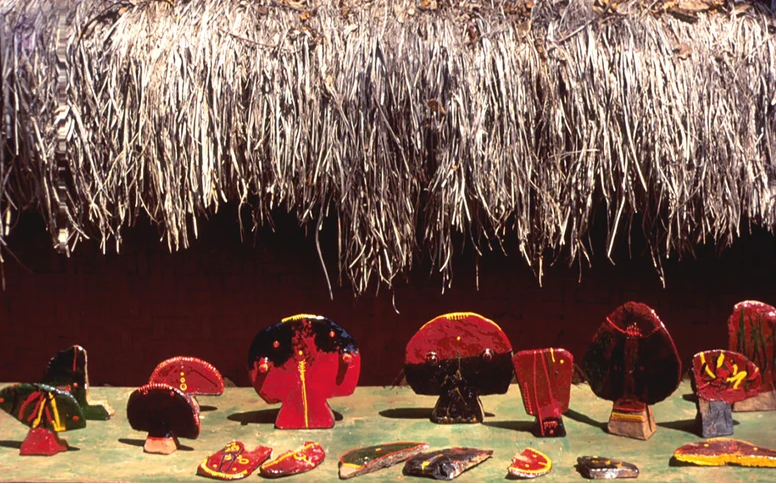
Participates in Lalit Kala Akademi’s exhibition of Contemporary Paintings in Miniature Format in Bangalore, Madras, Ahmedabad, Chandigarh, and Varanasi, the Museum of Modern Art in West Germany, the 7th British International Print Biennale in Bradford, the Tokyo Biennale in Japan, the third Asian Biennale in Bangladesh, and the second Biennale in Cuba, Jatin Das was highly active in the 1980s.
In 1985, Jatin Das Participated in the third Asian Biennale in Bangladesh and the second in Cuba, Havana. Times of India presents the artist’s show ‘Man-Woman’, a selection of his drawings and paintings at Shridharani Gallery, Triveni Kala Sangam, New Delhi. Begins the process of surveying, identifying, and collecting folk tribal arts and crafts for the setting up of the Folk Art Museum by the Government of Orissa.
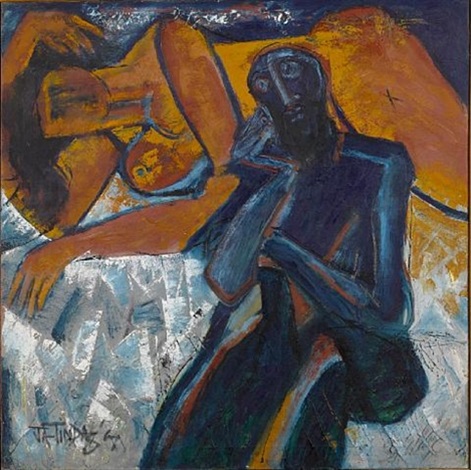
In the 1980s, for its upcoming calendar, Indian Airlines commissioned the artist to work on the ‘Flying Figures’ theme. The artist works in oil – Flight from Sun, Man Luring Apsara, Reaching Beyond Heavens, Pause in Mid-Air, Fusion of Hearts, Conception of Being, and Two Encircling Figures.
In the 1990s, Orissa was hit by the devastating ‘super cyclone’ that left more than ten thousand dead and thousands of people rendered homeless; the artist adopts a ravaged village in Orissa and assists in reconstruction, rehabilitating, and rebuilding it. ‘Jatin Das: Drawings and Engravings’, a retrospective spanning 40 years of the artist, was held at AIFACS, New Delhi, in 2002.
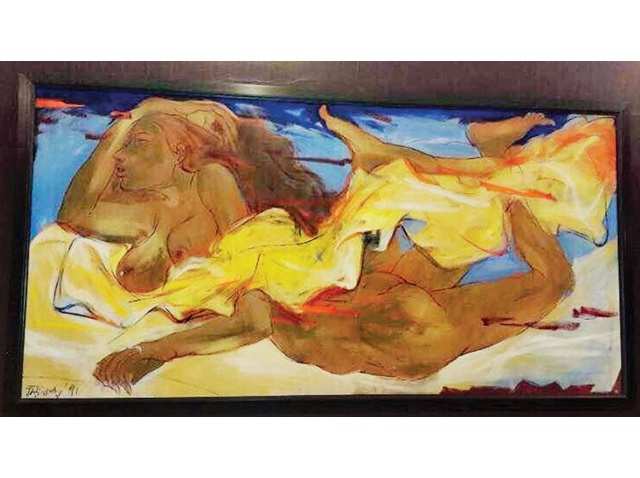
In 2004, ‘Pankha’, an exhibition showing selected hand fans from the artist’s collection, was shown at the National Handicrafts & Handloom Museum, New Delhi. The display is a deep dive into the artist’s rich collection of these fans (over 6,000 in number) that he has collected over four decades. The one-of-its-kind collection would continue showcasing in various cities in India and worldwide, including London, Zurich, Kuala Lumpur, Manila, and Washington DC. ‘Another Day, Another Time: Journeys Across Foreign Lands’, an exhibition celebrating the numerous travels of the artist, was shown in New Delhi in 2006.
In 2012, he received the Padma Bhushan, the third-highest civilian award, for contributing to Indian art. In 2017, Jatin Das Portraits: Artists and Friends was published by The Raza Foundation, featuring over 500 portraits by the artist of various personalities, many of them his friends. These include portraits of Sardar Gurcharan Singh, the father of the studio pottery movement in India, Kumar Gandharva, Badey Ghulam Ali Khan Sa’ab, F. N. Souza, and G. R. Santosh, among others. The exhibition is held in Lalit Kala Akademi in New Delhi. In 2020, Works on Exodus 2020, a series of 200 ink paintings, becomes one of the most visually telling and significant chronicles of the plight of the migrant population in the wake of the pandemic that the artist paints when forced under the confinement of the lockdown.
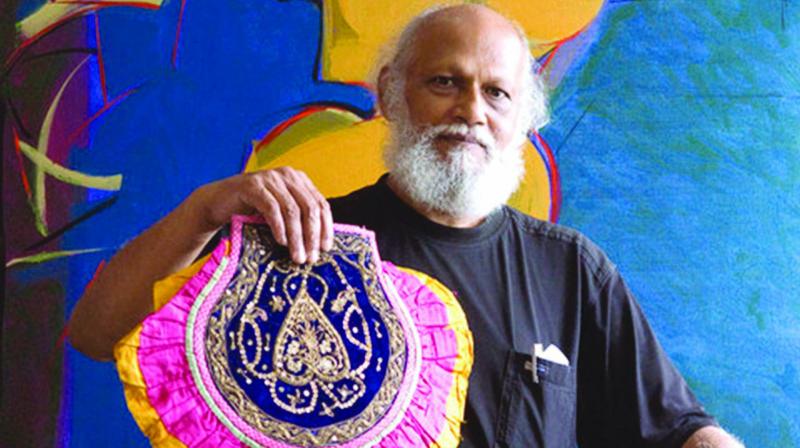
The National Museum of Modern Art in Delhi will debut the retrospective exhibition of renowned artist Jatin Das on November 2023. This exhibition, titled “Jatin Das: A retrospective: 1963-2023,” will showcase selected works from the artist’s 60 years of artistic life in various media.
Photo Courtesy – Jatin Das
India’s Rich Art Heritage on Display in Oman’s National Museum




